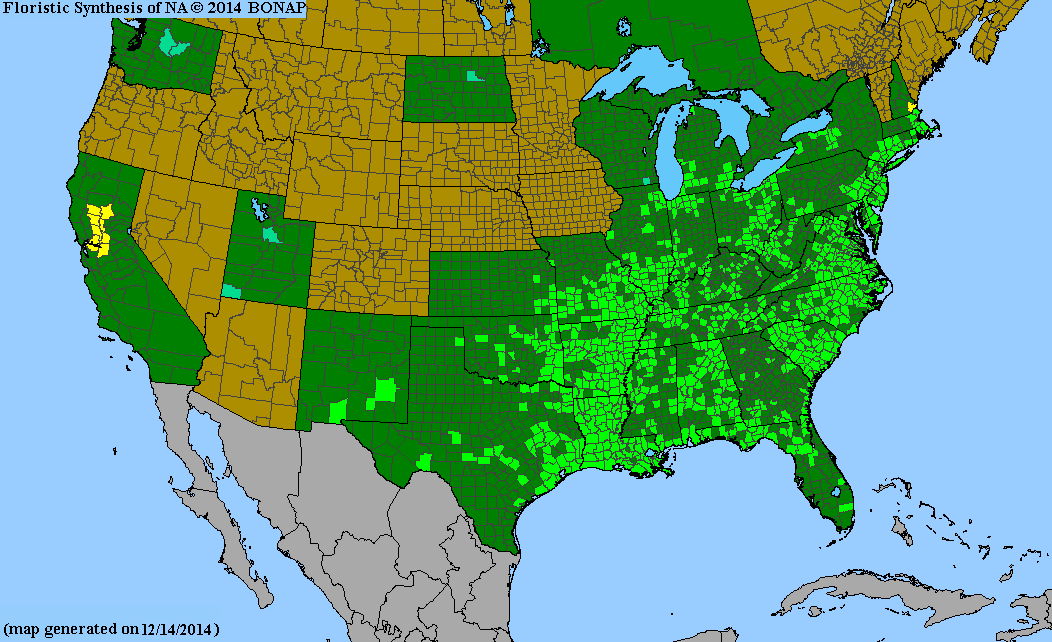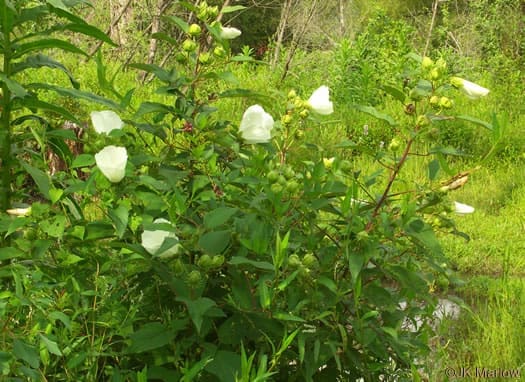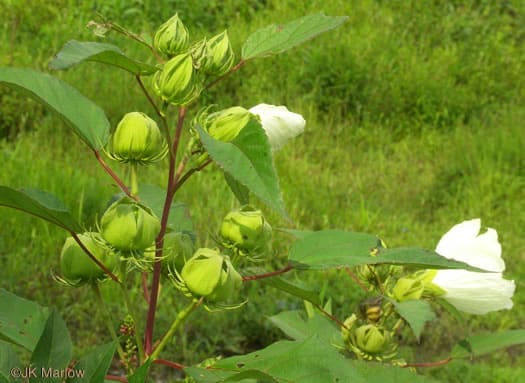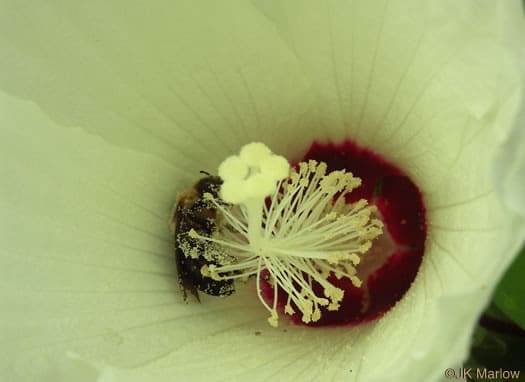Malvaceae
crimson-eyed rose-mallow
Hibiscus moscheutos
Synonyms
Hibiscus palustris
Other Common Names
swamp rose-mallow, eastern rosemallow, wild cotton
Plant Type
Herbaceous Wildflower
Life Cycle
Perennial
Typical Size
4-7 ft. tall
2-5 ft. wide
Tolerant of
Occasional Flooding
Inolerant of
Dry Soil
Propagation
By seed, By cutting, By division
Plant Propagation Notes
Easily grown from seed. Tip cuttings taken in early July root relatively easily.
Plant Planting Notes
Provide at least 4 feet of space, up to 7 feet for specimens.
Plants/Diseases
Japanese beetles can cause severe foliar damage if left unchecked. Some susceptibility to leaf spots or blights as well as common garden pests such as whitefly or aphids.
Wildlife Benefits
Nectar/pollen source for pollinating insects, Host plant for butterfly larvae, Nectar source for hummingbirds, Supports numerous caterpillars (bird food)
Leaves
Leaf blades alternate, narrowly to broadly lanceolate, finely hairy with dentate or serrate margins.
Flowers
Large saucer-shaped horizontal flowers with 4-5 petals, up to 6 inches across.
Fruit
one to 3 inch ovoid and hairy capsules approximately 1-1.25 inches long.
Bark
Stems glabrous or variously hairy.
Toxicity
No known toxicity.

USDA Hardiness Zones
5, 6, 7, 8, 9
Light Exposure
Full Sun, Part Sun/Shade
Soil Moisture
Moist
Soil Drainage
Well-drained, Poorly Drained
Soil pH
Acidic (less than 6.0)
Native in South Carolina?
Yes
Plant Native Habitat
marshes, swamps, river sandbars.
Global Conservation Status (NatureServe)
Secure (G5)
Federal Conservation Status (USFWS)
Not Listed
Distribution Notes
Native throughout South Carolina
Subspecies
Hibiscus moscheutos subsp. lasiocarpos
Hibiscus moscheutos subsp. moscheutos



